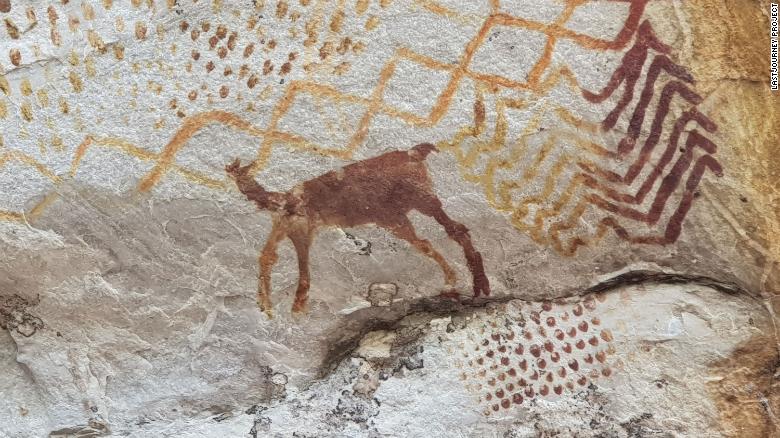How Old Is the Rock Art at La Lindosa?
More than 12,000 years ago, South America was teeming with an astonishing array of ice age beasts — giant ground sloths the size of a car, elephantine herbivores and a deerlike animal with an elongated snout.
These extinct giants are among many animals immortalized in an 8-mile-long (13-kilometer-long) frieze of rock paintings at Serranía de la Lindosa in the Colombian Amazon rainforest — art created by some of the earliest humans to live in the region, according to a new study.
“(The paintings) have the whole diversity of Amazonia.
Turtles and fishes to jaguars, monkeys and porcupines,” said study author Jose Iriarte, a professor in the Department of Archaeology at the University of Exeter in the United Kingdom.
Iriate calls the frieze, which likely would have been painted over centuries, if not millennia, “the last journey,” as he said it represents the arrival of humans in South America — the last region to be colonized by Homo sapiens as they spread around the world from Africa, their place of origin. These pioneers from the north would have faced unknown animals in an unfamiliar landscape.
“They encountered these large-bodied mammals and they likely painted them. And while we don’t have the last word, these paintings are very naturalistic and we’re able to see morphological features of the animals,” he said.
But the discovery of what scientists term “extinct megafauna” among the dazzlingly detailed paintings is controversial and contested.
Other archaeologists say the exceptional preservation of the paintings suggest a much more recent origin and that there are other plausible candidates for the creatures depicted. For example, the giant ground sloth identified by Iriarte and his colleagues could in fact be a capybara — a giant rodent common today across the region.

Final word?
While Iriarte concedes the new study is not the final word in this debate, he is confident that they have found evidence of early human encounters with some of the vanished giants of the past.
The team identified five such animals in the paper: a giant ground sloth with massive claws, a gomphothere (an elephant-like creature with a domed head, flared ears and a trunk), an extinct lineage of a horse with a thick neck, a camelid like a camel or a llama, and a three-toed ungulate, or hoofed mammal, with a trunk.
He said they are well known for fossilized skeletons, enabling palaeontologists to reconstruct what they must have looked like. Iriarte and his colleagues were then able to identify their defining features in the paintings.
While the red pigments used to make the rock art have not yet been directly dated, Iriarte said that ocher fragments found in layers of sediment during excavations of the ground beneath the painted vertical rock face dated to 12,600 years ago.

The hope is to directly date the red pigment used to paint the miles of rock, but dating rock art and cave paintings are notoriously tricky. Ocher, an inorganic mineral pigment that contains no carbon, can’t be dated using radiocarbon dating techniques.
The archaeologists are hoping the ancient artists mixed the ocher with some kind of binding agent that will allow them to get an accurate date. The results of this investigation are expected possibly later this year.
Further study of the paintings could shed light on why these giant animals went extinct. Iriarte said no bones of the extinct creatures were found during archaeological digs in the immediate area — suggesting perhaps they weren’t a source of food for the people who created the art.
The research was published in the journal Philosophical transactions of the Royal Society B on Monday.





